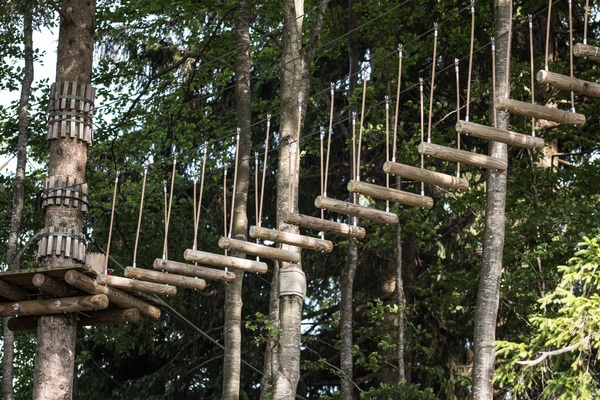Get updates from The Developer straight to your inbox Yes, please!
Playground or panopticon?
Playground design reflects the workforce we hope to create, the behaviour to correct and the adult to engineer

The history of playground design reflects the workforce we hope to create, and the emphasis is now on resilience, says anthropologist Nitasha Kapoor.
Speaking with The Developer in a podcast on designing for childhood, Ms Kapoor says the origins of the playground as a panopticon reveal how its design is a conscious method of control and education.
Ms Kapoor’s interest was sparked by the new ‘destination playgrounds’ being installed across east London.
“It seemed that along with the gentrification of a neighbourhood you could predict that a playground would replace metal structures with a climbing tower and equipment made out of wood and rope – if you were lucky, maybe even a skatepark for older kids.”
As an anthropologist that has completed research for Transport for London on the use of the city, Ms Kapoor was intrigued by this choice of play equipment.
“They were all very similar: zip lines and climbing walls – everywhere climbing walls. So I went away and did this study to try and understand what this all means.”
Ms Kapoor began by tracing the origins of the Western playground back 150 years.
“It was a response to social problems to do with health, living in cities and immigration.”
“In the UK and the USA, playgrounds were designed to pull immigrant kids out of the home and into a more visible space where they could be monitored and their development could be ‘corrected’,” says Ms Kapoor.
Similarly, she says the German kindergarten movement in the 1930s was intended to draw nannies into a public arena where their influence on children could be monitored.
This led Ms Kapoor to link the design of the playground to Michel Foucault’s concept of the panopticon. “The panopticon is a system of control whereby you feel like you are being watched, and therefore you watch yourself,” says Ms Kapoor.
“It’s usually thought about in relation to prisons, but it’s quite telling that the playground is also an example of this concept.”
In the 1970s, a series of high-profile accidents in the UK led to a preoccupation with risk, including the installation of safety surfacing in playgrounds. Ms Kapoor says this resulted in playgrounds becoming “more and more boring”.
Public perception of stranger danger and fear of abduction also became exaggerated, she says. “This created a shift away from public spaces and towards inner sanctuaries, resulting in kids increasingly staying indoors and glued to screens.”
But this approach to safety backfired, Ms Kapoor finds, creating risk-averse adults lacking the creativity and resilience now so prized in the age of automation and artificial intelligence.
“What’s at risk when we are overly concerned about a child’s safety is that it deprives them of the necessary experiences that help them become independent.”
However, she says the new playgrounds being built across the UK are now embracing and incorporating a measure of risk as a key part of child development.
“There’s a growing sense that children need more risky experiences in their lives, in order to overcome their fears by feeling ‘out of control’.”
The popularity of large-scale climbing structures in the UK is linked, in Ms Kapoor’s opinion, to our current desire for resilient, stress-proof workers, able to take measured risks.
Kapoor points to Mihaly Csikszentmihalyi’s ‘theory of flow’ to explain “how privileging certain risky play activities can provide new forms of insurance to protect against our kids not being able to handle fear, failure and risks”.
In his 1992 publication, Mr Csikszentmihalyi writes: “The climber knows if he is ‘doing well’ if he feels in control of his actions, whereas the arousal of fear signals immediately that he is ‘doing poorly’ and must make adjustments.”
Ms Kapoor says this natural ‘feedback loop’ develops resilience and calculated risk-taking, while climbing structures are ideal because you can return to them again and again. “Rather than following prescribed rules, the climber can project her own challenges on the frame.”
As for the fashion for natural materials, Ms Kapoor believes this is based in our collective craving for more natural environments as we increasingly live in cities.
She says her decision to research the playground stemmed from motherhood.
“I ended up spending a lot of time in playgrounds, and it made me think a bit about what was going on there.”
Listen to the podcast by clicking the link and sign up to The Developer Weekly to be updated when new episodes go online.
Sign up to our newsletter
Get updates from The Developer straight to your inbox
Thanks to our organisation members
Become a member
© Festival of Place - Tweak Ltd., 124 City Road, London, EC1V 2NX. Tel: 020 3326 7238

